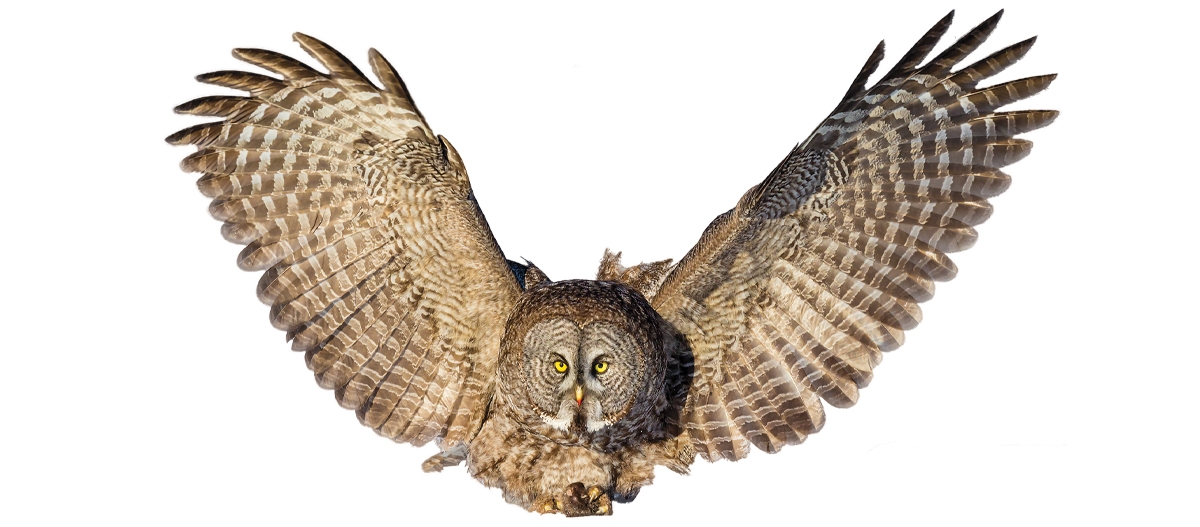When the long, dark nights of winter arrive, it is the perfect time for kids and their grandparents to go owling. The early nightfall means you can be outside to hear and look for owls even before bedtime!
Most owls are active at night, but a few species sometime hunt in the daytime, usually at dawn and dusk.
One species you might see hunting during the day is the Great Grey Owl. In the far north of Alaska, Short-eared Owls and Snowy Owls hunt in daylight during the summer when nights are so short. When owls are not out hunting, they hide in cavities in trees or in nests abandoned by eagles, hawks, or ravens. Sometimes they will build nests on top of snags, on tree branches next to the main tree trunk, in barns, or caves. Burrowing Owls nest in tunnels dug and abandoned by rodents.
Owls have feathers that are different from other birds. The leading edge of each feather is soft and the surface of the feather is fuzzy, which reduces the sound they make when flying. This allows owls to hunt without making sounds to alert their prey.
All owls are carnivores: they eat other animals or insects. Most eat their prey whole, although they might first bite off the head. Except for Snowy Owls, who eat their prey in the open, most swallow their prey and go back to hiding in trees or shrubs. Instead of digesting bones, hair, or exoskeletons (the hard shell of a beetle for example) of insects, owls spit up a pellet of indigestible food each day. Pellet piles will help you identify places where owls usually roost.
But why is winter a good time to see these night birds?
Unlike most birds, owls mate in winter, usually in January or February. In December, they become more vocal, hooting a lot at night in hopes of finding a mate. Several species, such as Great Horned Owls and Eastern Screech Owls, will stay together and be mates for life. Other species, like the Snowy Owl, change mates each year.
By listening to the hoots, you can find an owl, and, if the moon is full, you will be able to see it as well. Once you get to know your owls, you will be able to tell what kind you see by the hoots they make. Like all birds, owls each have their own special sound.
A pair of Great Gray Owls has nested in the woods behind our house for years. Each December we hear the male’s deep hoots—up to 10 of them in a row—as he calls to his mate. The female answers with a whistle-like eeeWEW.
Each species of owl lays a different number of eggs. The time it takes for eggs to hatch varies, too. When they hatch, the babies need the adult pairs to feed them. Some owls, like the Elf Owl, feed chicks for four or five weeks. Larger owls, like the Great Horned Owl, will feed chicks for up to three months.
Smaller owl species usually start to fly earlier than bigger owls. Sometimes a young owl, called a fledgling, will leave the nest before it can fly and will spend time sitting on a tree branch until it is ready to fly. The parents will keep feeding it until it is ready to fly and find food on its own.
We like to look for the Great Gray Owls that live near us on winter nights with a full moon and white snow on the ground. They often sit on the fence posts, hooting in the bright moonlight, making it easy for us to find them.
Ask your grandkids to go owling with you this winter: it is a lot of fun for everyone! MSN










